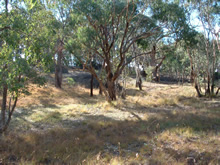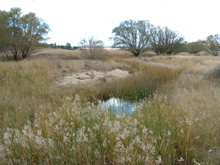Upper Lachlan
Upper Lachlan Snapshot 2008
This "snapshot" profile celebrates a recent environmental initiative within this LGA.
Upper Lachlan Shire Council Biodiversity Planning Framework
Upper Lachlan Shire’s Biodiversity Protection Framework ranks the biodiversity values across the Shire, identifies threatening processes and provides a framework for the protection, recovery and enhancement of biodiversity values.

The Framework resulted from a partnership between Council, the Hawkesbury-Nepean and the Lachlan Catchment Management Authorities, and the Departments of Environment and Climate Change and of Planning. A project was initiated in 2007, funded by the two CMAs, with in-kind contributions from the other partners.
The Framework was prepared to provide guidance for protecting and enhancing the Shire’s biodiversity values while accommodating sustainable development. It will help Council Officers in managing biodiversity values, including in the development assessment process.
The Framework ranked biodiversity values using standardised criteria and based on best available environmental data and advice. It identifies the best natural resource information available, including the distribution of remnant native vegetation, important wetlands and rivers, wildlife corridors, habitat for threatened plants and animals and endangered vegetation communities. It outlines further data and research needed to improve the information base and enhance management.

Biodiversity values are considered within the context of the Shire’s traditional and emerging rural land-use setting. Processes that threaten values are identified and addressed: strategic measures for protection, recovery and enhancement of biodiversity values are recommended. A set of Council management actions is prioritised, including staff training, and education and community partnership actions.
To meet its aims, the BPF seeks to achieve gains in the extent/quality of native vegetation, increased security for regionally significant vegetation communities and fauna habitats (through a reserve system, planning, and community supported programs), recognition, support and enhancement of a comprehensive network of biodiversity corridors, and protection of riparian vegetation and waterways.
